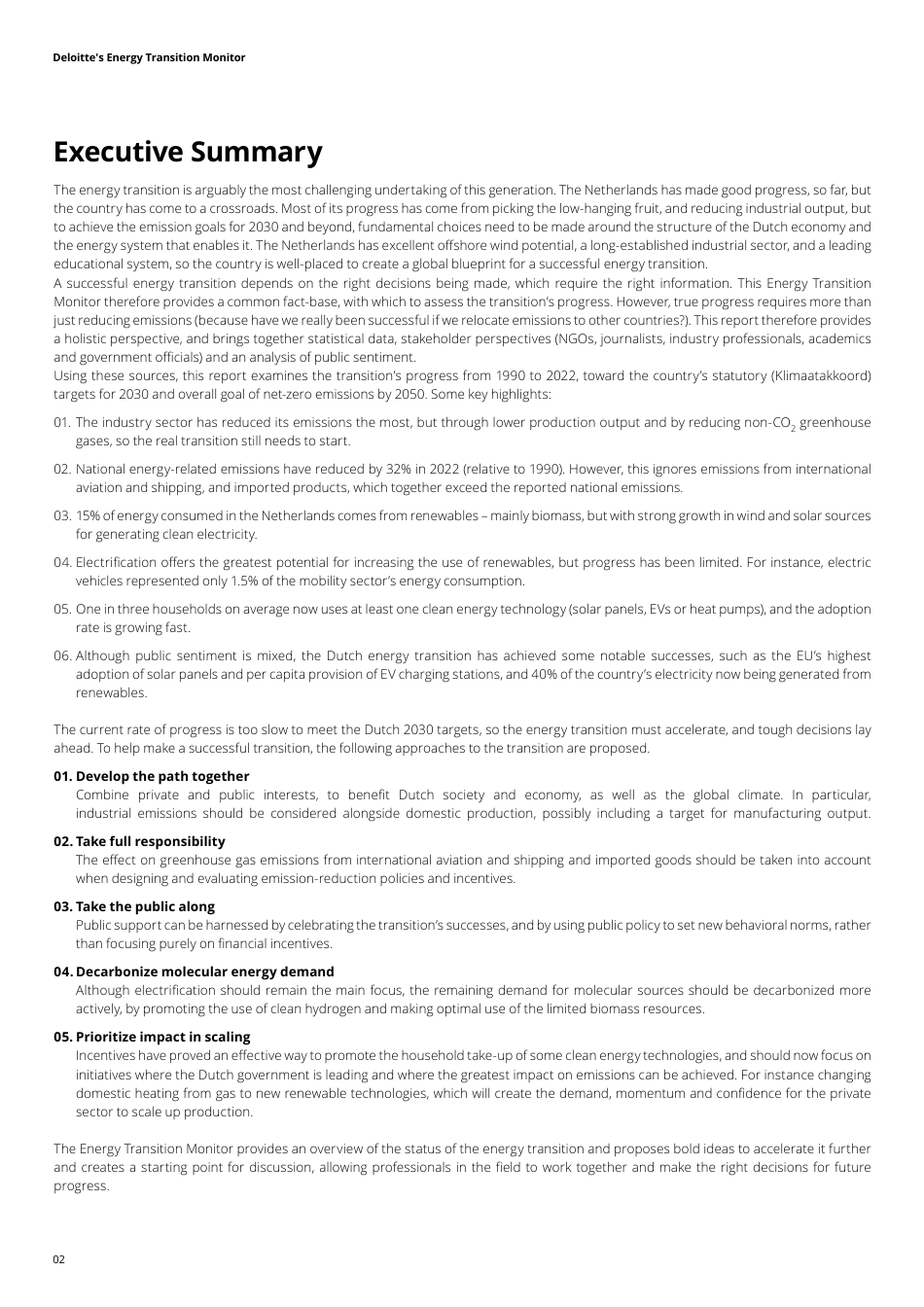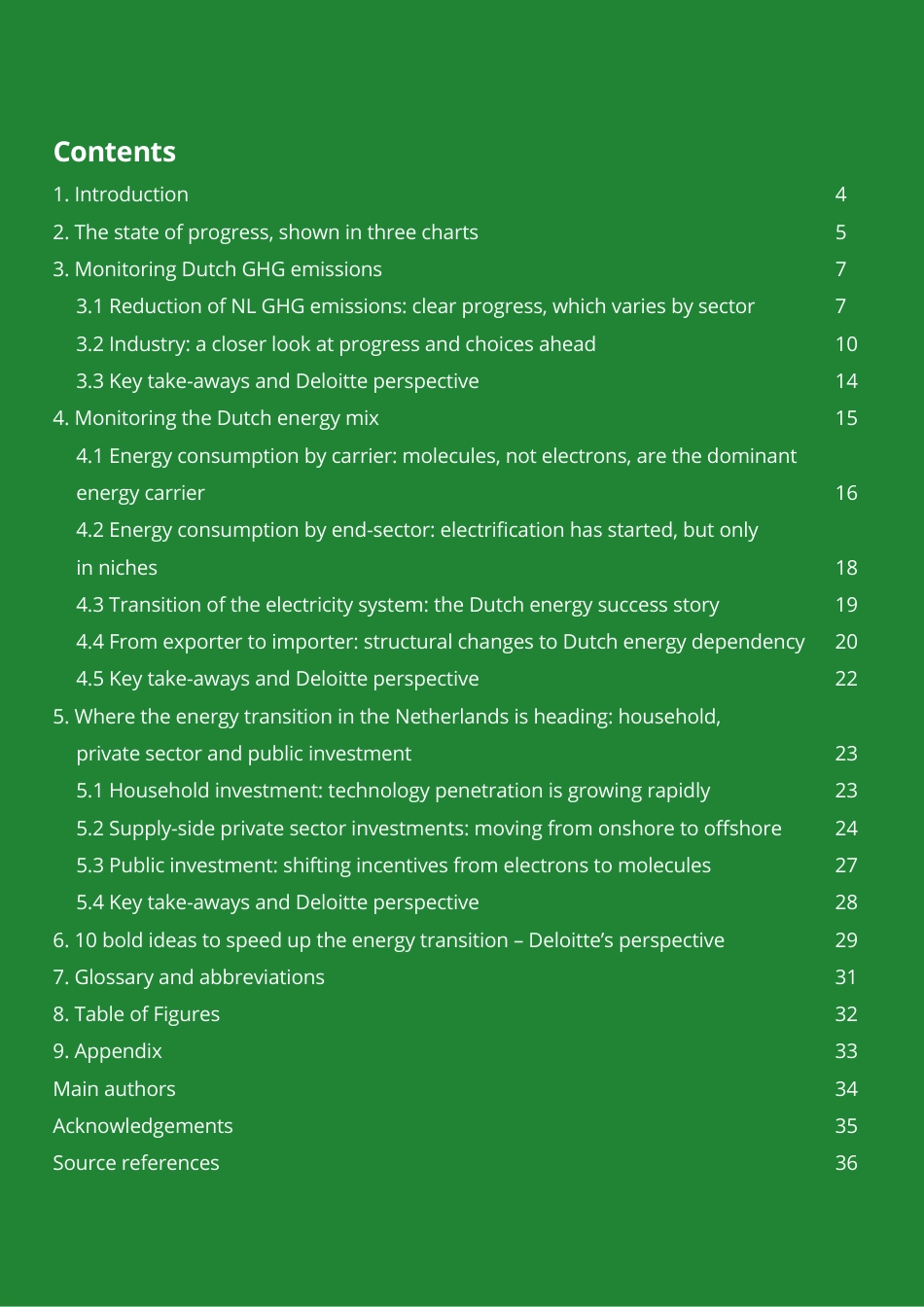Deloitte’s Energy Transition Monitor Energy transition at a crossroads A Deloitte Netherlands publication September 202302Deloitte's Energy Transition MonitorThe energy transition is arguably the most challenging undertaking of this generation. The Netherlands has made good progress, so far, but the country has come to a crossroads. Most of its progress has come from picking the low-hanging fruit, and reducing industrial output, but to achieve the emission goals for 2030 and beyond, fundamental choices need to be made around the structure of the Dutch economy and the energy system that enables it. The Netherlands has excellent offshore wind potential, a long-established industrial sector, and a leading educational system, so the country is well-placed to create a global blueprint for a successful energy transition.A successful energy transition depends on the right decisions being made, which require the right information. This Energy Transition Monitor therefore provides a common fact-base, with which to assess the transition’s progress. However, true progress requires more than just reducing emissions (because have we really been successful if we relocate emissions to other countries?). This report therefore provides a holistic perspective, and brings together statistical data, stakeholder perspectives (NGOs, journalists, industry professionals, academics and government officials) and an analysis of public sentiment. Using these sources, this report examines the transition’s progress from 1990 to 2022, toward the country’s statutory (Klimaatakkoord) targets for 2030 and overall goal of net-zero emissions by 2050. Some key highlights:01. The industry sector has reduced its emissions the most, but through lower produc...



